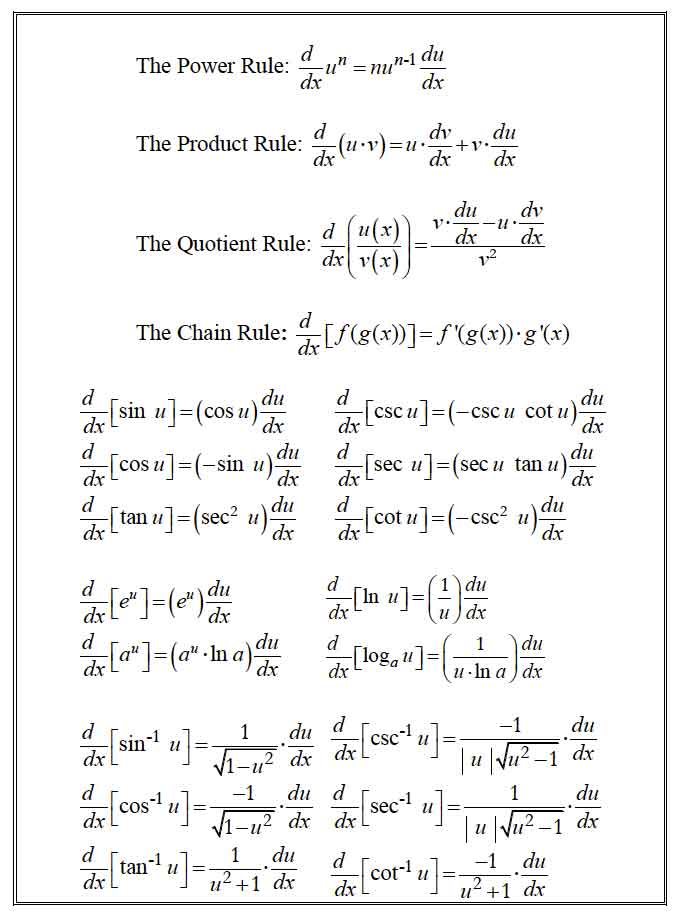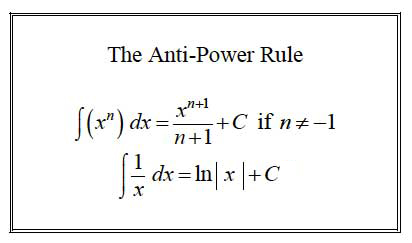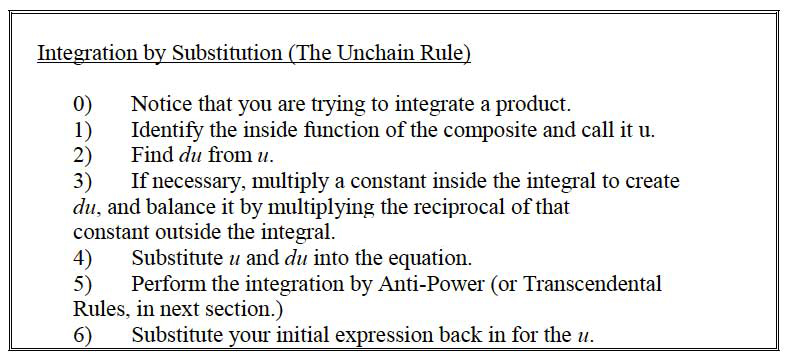

The main reason students lose interest in calculus is that they misuse the essential formulas for finding derivatives. When students repeatedly get the wrong answer as a result, they give up on calculus as much too confusing. Who wouldn't? That response is understandable, but unfortunate. It is actually a universal human defense mechanism against feeling inadequate, while a better way to overcome that false feeling is to make sure you are using the proper tools in the proper way. That way you prove to yourself that you are perfectly capable of getting the right answer, and your prior difficulties were simply a false start, easily put right. I'm happy to help you prove it. I like to.
GOAL: practice the use of these formulas frequently enough that they seep into memory and stay there.

The most complex calculations, involving nested functions and double derivatives, sometimes require the use of two or more of these formulas together, usually one leading to the need for another. That's perfectly normal, as are everyone's occasional struggles with this kind of math.
With the additional concepts and formulas below it is best pratice (and improves test scores) to check your final answer.
How? Easy! Take the derivative of your answer and make sure your derivative matches the equation you started with.
The Anti-Power Rule is the first consideration for resolving a derivative back to the function it came from,
which is called an Integral.
Aha! The integral! That's what it means: where the derivative came from!

The anti-power rule works best for straightforward polynomials, such as f(x) = 12x3 - 5x2 + 9, etc.
Why? Because polynomials permit us to raise each term, one by one, back to the term it derived from.
Why? Because all the terms are linked together with basic addition or subtraction.
Integration By Substitution, also known simply as Substitution, is for more complex equations involving composite functions.
These steps are a guide. You get the hang of Substitution by working through multiple illustrative examples of how it works.

Yet another name for the process outlined above is The Unchain Rule, because it relies on principles from the Chain Rule.
The Transcendental Integration Rules are for resolving a derivate back to the equation it came from when... ?
When that equation involved trigonometric functions, such as f(x) = 3 cos 5x + 2 sin2 x, etc.

© 2018 graham best superiortutor.com
(powered by thinking)